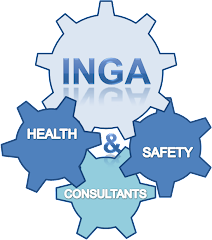Any effective health and safety management program requires discipline and follow-through from both management and workers. Often, however, employers fail to follow through on reforming or terminating unsafe workers; instead, just letting them continue to flail along while putting themselves and others at risk.
While the threat of a termination-related lawsuit is undoubtedly sobering, doing nothing is far from an acceptable solution. Failing to act when an unsafe employee ignores safety practices or engages in reckless behaviours can destroy your safety culture. Morale drops, injury risk increases, and you face greater exposure to compliance-related complaints and citations. This accepted behaviour soon becomes the norm and so your safety culture is eroded to a point where you no longer understand why you are experiencing so many incidents.
So how has this attitude become entrenched in our working culture?
- Production time and cost constraints place pressure on safety considerations.
- A perception amongst workers that supervision tolerates safety deviations, if they are in the interest of getting the job done quicker.
- Inability or lack of desire to implement disciplinary action with regard to safety deviations.
- Legislator’s failure to impose the law on employers and employees. (Risk of punitive action is not perceived)
- A lack of understanding of the law.
- Haphazard and self serving health and safety implementation and control.
So how do company’s overcome this attitude and create a culture of self disciplined compliance:
- Including health and safety competency as part of the recruiting process.
- Entrenching health and safety performance requirements into employment contracts.
- Defined disciplinary codes to address health and safety contraventions.
- Incentive programs. (Performance rather than outcome based)
- Health and safety knowledge included in individual development programs.
- Visible leadership and consequential enforcement of safety rules.
Safety successful organizations have, through these means, replaced the requirements for reform and termination with the concepts of continuous improvement and individual development.
The need to reform or terminate is indicative of a health and safety system that is haphazardly implemented and is based on continuous recovery from failure. This need can only be overcome if we take ownership and acknowledge health and safety as an integral business driver. Clearly defined systems provide for early intervention and reduce the need to terminate, which in itself is a costly process.
Set your standard, continuously measure performance against it and stop tolerating sub-standard performance. If your system is right then terminating non-performing elements of your organization will not only be objective but beneficial to everyone.



